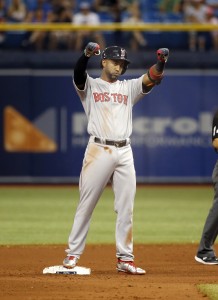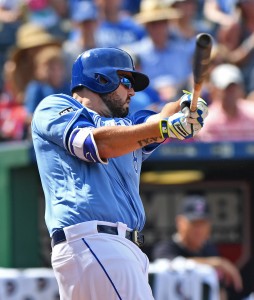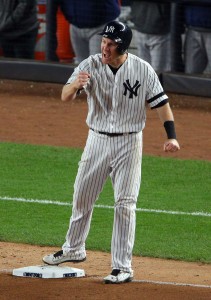After entertaining offers from a handful of teams leading up to the 2017 non-waiver trade deadline, the San Diego Padres opted not to trade reliever Brad Hand. But discussions are sure to heat up once again heading into the hot stove season. While the elite lefty is no sure bet to be dealt, the Friars look like a long shot to contend in a tough NL West division and could be well-served to exchange Hand for a package of young talent.
Hand followed a breakout 2016 campaign with an equally phenomenal 2017 season. Among major-league relievers this past year, he finished 14th in ERA (2.16), 11th in xFIP (2.90), 21st in K/9 (11.80), 6th in innings pitched (79 1/3), and 4th in Win Probability Added (3.89). The former second-round pick accrued 21 saves despite not taking over the closer role until late July, and was valued at 1.7 fWAR.
Every team in the major leagues would look better on paper by adding Hand to their bullpen. Relievers of his caliber are difficult to come by, let alone left-handers. He wouldn’t even be a rental; Hand is controllable through 2019 via arbitration. MLBTR projects him to be awarded just a $3.8MM salary in 2018, making him an incredibly payroll-friendly alternative to some of the big name free-agent relievers.
Not every team can afford Hand in terms of prospects, however, which is how we can begin to eliminate some teams from the mix. When the Indians acquired lefty Andrew Miller from the Yankees at the 2016 trade deadline, they forked over four minor leaguers, including top prospects Clint Frazier and Justus Sheffield. While nobody would argue that Miller is the superior (and more established) relief pitcher, the two come with similar amounts of team control, while Miller’s contract guaranteed him $9MM per season.
If the asking price for Hand is anything close to the return the Yankees got for Miller, then we can firmly remove the Cubs, Diamondbacks, Angels, Giants, Mariners and Orioles from the picture. Teams like the White Sox, A’s, Phillies and Reds are probably too far away from serious contention to consider a run at Hand. But beyond that, there would still appear to be a vast pool of potential suitors, leaving the Padres firmly in the driver’s seat.
On paper, there are a few matches that make loads of sense. The Astros have a powerful roster that lacks only the presence of a dominant left-handed bullpen arm, and they certainly have the prospect depth to swing a trade. Likewise, the Dodgers would certainly benefit from another elite reliever to back Kenley Jansen, and their farm may be better than that of the Astros. The Brewers have a strong rotation that would benefit from another elite reliever who could help shorten games.
My favorite potential match is the Cardinals. St. Louis has so many outfield prospects that it’ll be hard to roster them all when the Rule 5 Draft comes around, while the Padres would probably love to add some upside young talent at that position. Meanwhile, the Cards are in definite need of a closer. I expect the two teams will at least discuss the possibility of a Hand trade.
Some other teams in dire need of bullpen help include the Twins, Rays, Rockies and Braves, though those teams might have other issues to address before thinning out their farm systems for a relief pitcher.
Whether a trade materializes or not, it’s fair to expect Hand’s name will pop up in trade rumors a fair number of times this offseason. It would surely be exciting to see how a contender might utilize him in the playoffs.




